Monsoons in Mumbai bring out a wealth of seasonal delicacies. Home chefs from different communities let us in on their food memories and traditional recipes

Karela per eedu
Summer in a seed
ADVERTISEMENT
In the absence of fresh fish in the season, the Kokni Muslim community resorts to alternatives such as pulses. Home chef Mumtaz Kazi (@home_chefmumz) shares that one such dish is ghughri — a soup-like preparation made with whole tur, or chawli or watana. “Monsoon also brings with it small fish like ambar [small shrimps], so most vegetable dishes are made with it,” she shares.
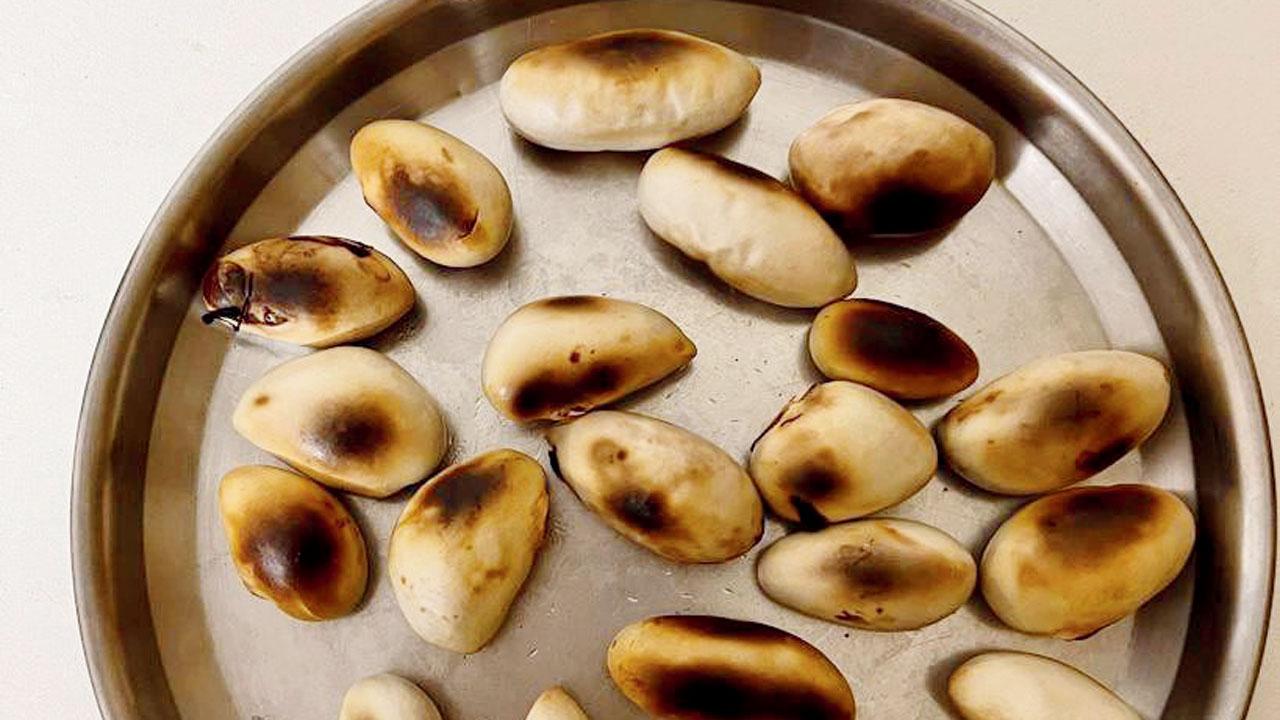
Jackfruit seeds
Since jackfruit is abundant in summer, they also sun-dry the seed. “They are then coated in mud and stored in matkas for the rainy season. We roast them and enjoy them as snacks; they’re also used in cooking,” says Kazi, who runs Mumtaz’s Kitchen.

A small fish called shingti also makes its way to the table, when the sea enters small canals amid the downpour. “Boys of the village rush to the canals to catch as much fish as possible. Shingti is a very delicate fish,” she adds.
Bittersweet affair
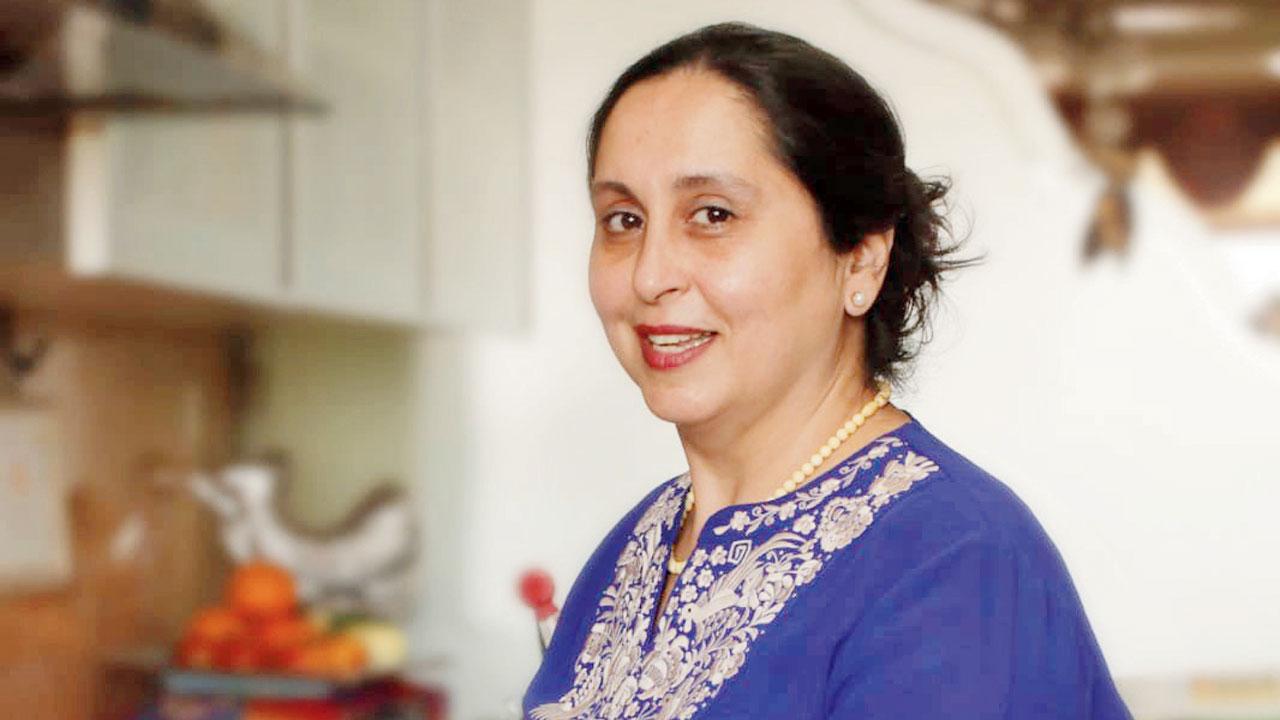
AAV re varsaad, dhebariyo parsaad; ooni ooni rotli ne kaarela nu shaak,” hums Parsi home chef Mahrukh Mogrelia, serenading us to her rain-splashed childhood days in Navsari, where monsoon meant the abundance of karela or bitter gourd. “The folk song is an invitation to the rains to come, so we can lap up warm, warm roti with karela nu shaak. This is also Bahman mahino [month] when we [Parsis] abstain from meat of hoofed animals. So, eggs are dearer to us,” Mogrelia, who runs @mahrukhskitchen, tells us. Naturally then, eggs find their way onto bitter gourd too, in the form of karela per eedu. “We cook it with onions, fresh green chilli masala and a spot of jaggery. It’s a very Parsi way of cooking the vegetable, topped with eggs,” she reveals, adding that the bitterness in karela helps cut down toxins in one’s system and rejuvenate the liver.
High and dry

By May, the familiar sight — and smell — of bombil and vakti on bamboo mandavs, and jawla (tiny prawns) on gunny bags lining koliwadas in the city greets us. Dried fish like bombil, jawla, karandi and khare come to the rescue of the community in the monsoon months, when the boats stop venturing into the sea. Koli home chef and fish-monger Harsha Tapke tells us they also stockpile finds of the summer. “Fish is a must for us and if it’s raining and we can’t go out, we bank on dried fish. Dried jawla, bombil and khare are all cooked mostly in onions and garlic. We add a dash of sugar to expel the pungency,” she reveals. Dried mandeli and karandi are also consumed by roasting on a low flame. “Sukkhi vakti ambat is also a delicacy. We cook baingan or eggplant with bombil, too,” she adds.
Suka kanda jawla
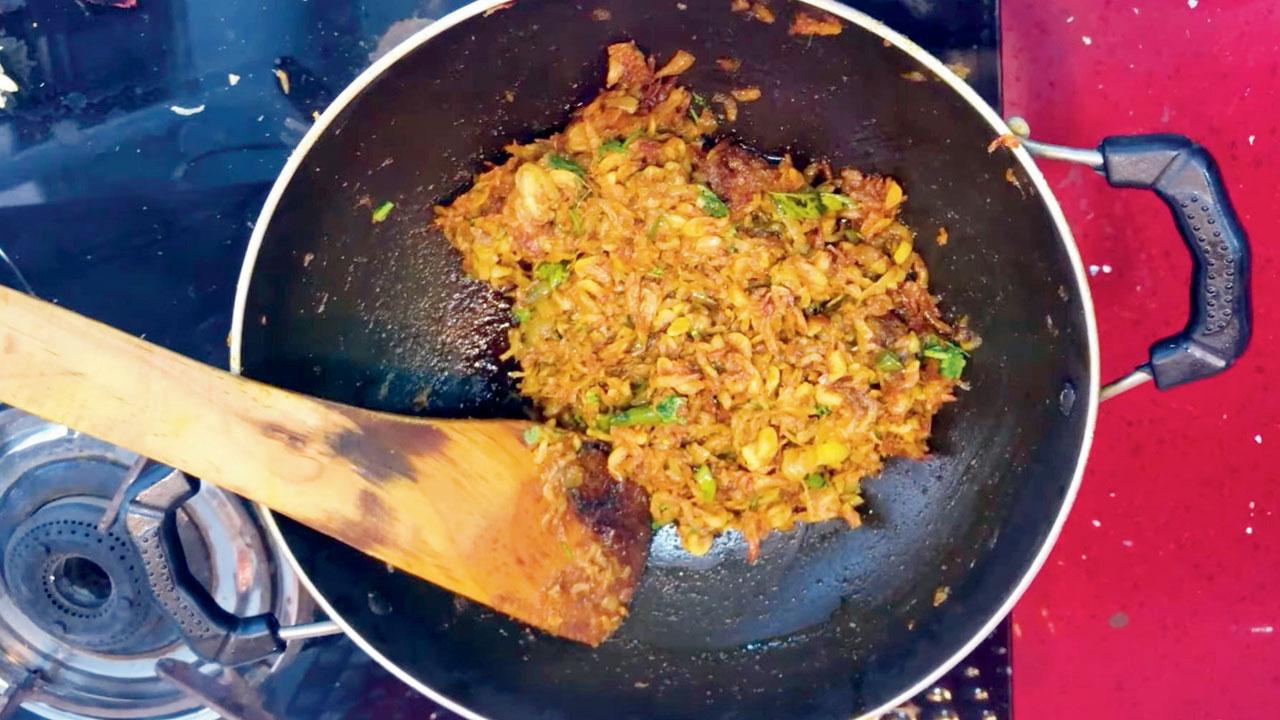
Suka kanda jawla
Ingredients
>> 7 big onions >> 3 green chillies >> 1 kg dry jawla >> 3 garlic cloves >> 2 tbsp turmeric>> 2 tbsp oil >> 1 tbsp Koli masala or red chilli powder >> 1 cup coriander >> 50 ml water
Method
Add chopped onions to the oil, along with chopped garlic and chillies. Stir well and add salt as per taste. Throw in the dried jawla; once the onions turn brown, add water and cook for 10 minutes by closing the lid. Tip in turmeric powder and the Koli masala. Mix it well and sprinkle a pinch of sugar to reduce the bitterness. Add a pinch of salt as per taste, if necessary. Once ready, garnish with chopped coriander and enjoy suka kanda jawla with hot bhakri.
Fishy flower
Right from the end of May, a Facebook group of Pathare Prabhus — one of the original settlers on the Mumbai island — starts buzzing with excitement around shewla or dragon stalk yam, a seasonal blossom that occupies pride of place among the community. Home chef Soumitra Velkar, who runs Hungry Cat Kitchen (@hungrycatkitchen), says shewla is typically found after the first showers.
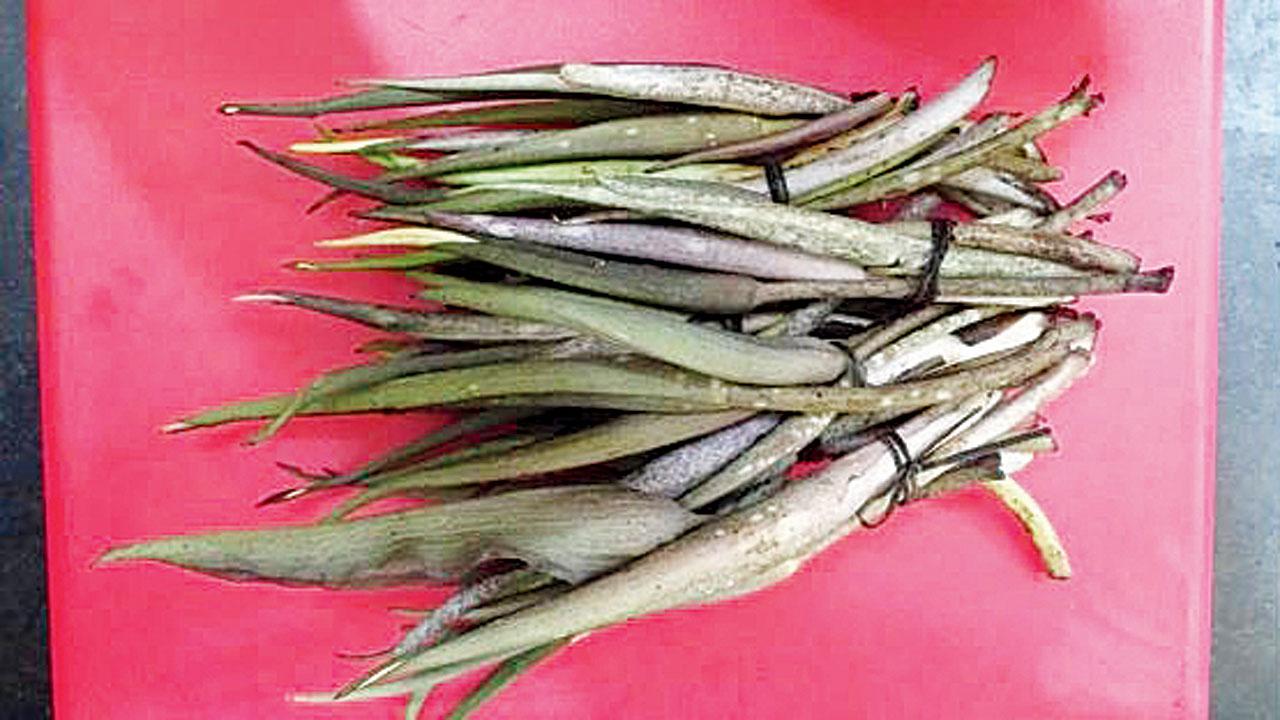
Shewla
Maharashtrian vendors sell it in pairs with a fruit called kakda, a souring agent. Pathare Prabhus, however, use tamarind as a neutralising agent. “Shewla is rich in oxalates that don’t agree with people’s throats and if you have it without neutralising it, it can cause a severe allergic reaction,” he cautions. The produce is akin to a mushroom, but slightly squishy and spongy. “It’s got a strong fishy aroma and an umami flavour. It’s eagerly awaited among the community,” Velkar elaborates.
Shewlache sambhare
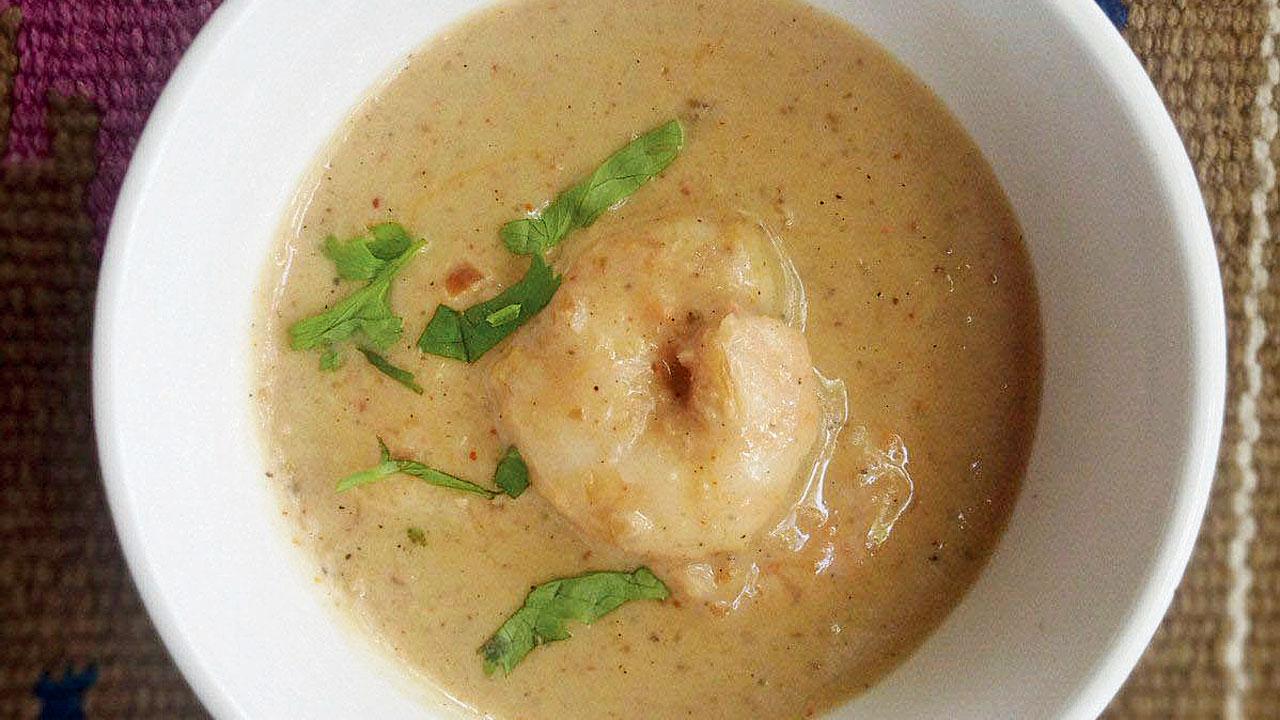 Shewlache sambhare
Shewlache sambhare
Ingredients
>> 1 cup chopped and blanched shewla >> 1.5 cup chopped onions >> 1/2 cup tamarind extract >> 2 tsp red chilli powder>> 2 tsp parbhi sambhaar >> 4 tbsp oil >> 1/2 cup prawns (preferably karandi) >> 1.5 cup thin second extract of coconut milk and 1 cup thick first extract >> 2 tbsp besan (dissolve in thin extract and make a slurry) >> A pinch of hing
 Soumitra Velkar
Soumitra Velkar
Method
Heat oil in a thick-bottomed pan, add a pinch of hing and chopped onions. Sauté on a medium flame till the onions are pink. Add the blanched shewale and tamarind, and continue to fry, stirring for 10 minutes. Add the powdered masalas and continue frying till the oil separates and the mixture comes together. Combine this with the thin extract besan slurry and bring to a bubbling simmer. Add the prawns and the thick extract; adjust the seasoning and simmer gently for a couple more minutes till the prawns are cooked. Serve once slightly cooled with steamed rice.
 Subscribe today by clicking the link and stay updated with the latest news!" Click here!
Subscribe today by clicking the link and stay updated with the latest news!" Click here!







